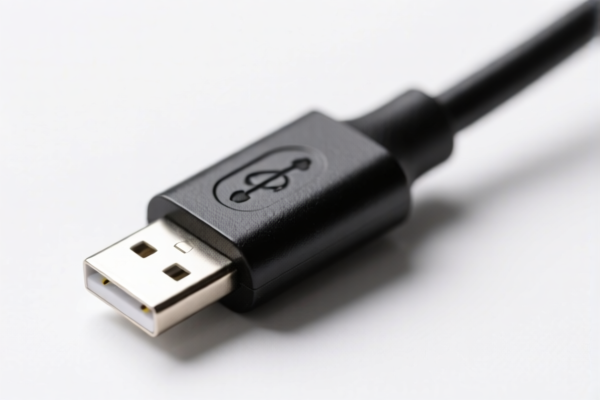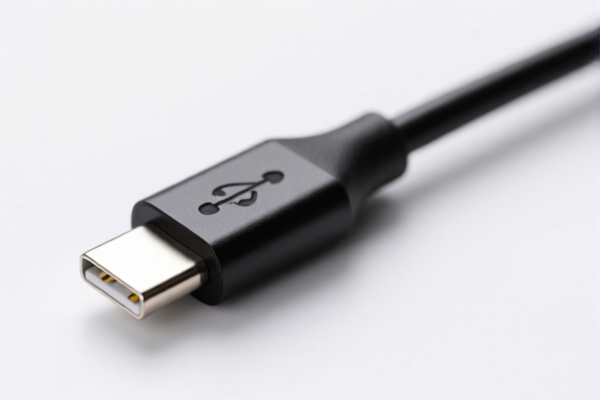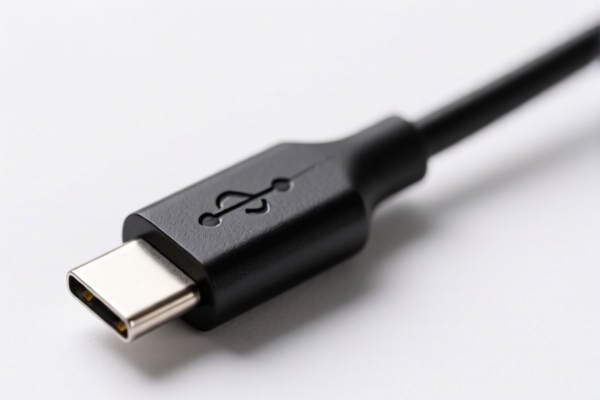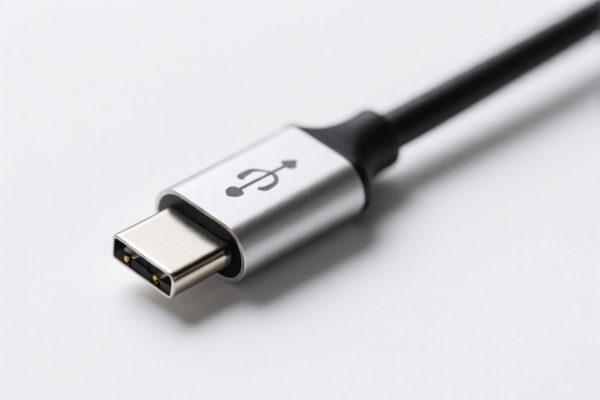| HS Code | Official Doc | Tariff Rate | Origin | Destination | Effective Date |
|---|---|---|---|---|---|
| 8544421000 | Doc | 55.0% | CN | US | 2025-05-12 |
| 8544422000 | Doc | 55.0% | CN | US | 2025-05-12 |




USB-C Cable
A USB-C cable is a 24-pin USB connector standard developed to enable faster data transfer speeds and more versatile power delivery compared to older USB standards. It has become increasingly common due to its widespread adoption across a variety of devices.
Material
USB-C cables typically consist of the following materials:
- Connector Shell: Often made of plastic (ABS, PVC) or metal (aluminum alloy, stainless steel) for durability and protection. Metal shells provide increased shielding and heat dissipation.
- Cable Jacket: Commonly PVC or TPE (Thermoplastic Elastomer) for flexibility and insulation. Braided nylon jackets are also prevalent, offering enhanced durability and tangle resistance.
- Conductors: Copper wires are used for data and power transmission. The gauge (thickness) of the wires influences the cable's power delivery capacity and data transfer speed.
- Shielding: Aluminum foil and/or braided shielding layers protect against electromagnetic interference (EMI).
- Internal Components: Integrated circuits (ICs) may be present in higher-end cables for features like Power Delivery (PD) negotiation and e-marker chip for identification and compatibility.
Purpose
The primary purposes of a USB-C cable are:
- Data Transfer: Transferring files between devices (computers, smartphones, external drives, etc.).
- Power Delivery: Charging devices and powering peripherals.
- Video Output: Supporting DisplayPort Alternate Mode (DP Alt Mode) for connecting to external displays.
- Audio Transfer: Carrying audio signals.
Function
USB-C cables function by transmitting data and power through a reversible connector. Key functionalities include:
- Data Transmission: Utilizing various USB protocols (USB 2.0, USB 3.1, USB 3.2, USB4) to transfer data at different speeds.
- Power Negotiation: Implementing USB Power Delivery (PD) to dynamically adjust power output based on the connected device's requirements.
- Alternate Mode Support: Enabling the transmission of video signals (DisplayPort, HDMI) and other protocols through the USB-C connector.
- Reversible Connector: Allowing insertion in either orientation, eliminating the need to check for correct alignment.
Usage Scenarios
- Charging Smartphones & Tablets: Most modern smartphones and tablets utilize USB-C for charging.
- Connecting to Computers: Transferring files, connecting peripherals (keyboards, mice, external drives).
- Connecting to External Displays: Using DP Alt Mode to output video to monitors and projectors.
- Connecting to Docking Stations: Expanding connectivity options with multiple ports (USB-A, HDMI, Ethernet, etc.).
- Connecting to Power Banks: Charging devices on the go.
Common Types
- USB 2.0 USB-C Cable: Basic data transfer and charging capabilities (480 Mbps).
- USB 3.1 Gen 1 (USB 3.0) USB-C Cable: Faster data transfer speeds (5 Gbps).
- USB 3.1 Gen 2 USB-C Cable: Even faster data transfer speeds (10 Gbps).
- USB 3.2 USB-C Cable: Offers varying speeds depending on the specific standard (5 Gbps, 10 Gbps, 20 Gbps).
- USB4 USB-C Cable: Supports up to 40 Gbps data transfer and Thunderbolt 3 compatibility.
- USB-C to USB-C Cable: Connects two devices with USB-C ports.
- USB-C to USB-A Cable: Connects a USB-C device to a USB-A port.
- USB-C to HDMI Cable: Connects a USB-C device to an HDMI display.
- USB-C to DisplayPort Cable: Connects a USB-C device to a DisplayPort display.
- USB-C Charging Cable: Primarily designed for charging devices, often with a higher gauge wire for increased power delivery.
- E-marker Cables: Contain an electronic marker chip that identifies the cable's capabilities and ensures safe power delivery. These are required for cables supporting higher power levels (above 60W).
USB-C cables fall under the category of insulated electric conductors, potentially fitted with connectors. Based on the provided information, the following HS codes may be relevant:
- 8544421000: This HS code covers insulated wire, cable (including coaxial cable), and other insulated electric conductors, for a voltage not exceeding 1,000 V, fitted with connectors, specifically those fitted with modular telephone connectors. While USB-C cables aren’t modular telephone connectors, this code represents a category of insulated cables with connectors. The tax details are: Basic tariff: 0.0%, Additional tariff: 25.0%, Post-2025.4.2 additional tariff: 30.0%, resulting in a total tariff of 55.0%.
- 8544422000: This HS code also covers insulated wire, cable (including coaxial cable), and other insulated electric conductors, for a voltage not exceeding 1,000 V, fitted with connectors, but categorizes “Other” types of cables, specifically those of a kind used for telecommunications. USB-C cables are frequently used for data transfer and communication, potentially aligning with this classification. The tax details are: Basic tariff: 0.0%, Additional tariff: 25.0%, Post-2025.4.2 additional tariff: 30.0%, resulting in a total tariff of 55.0%.
Explanation of HS Code Structure (based on provided information):
- 85: This chapter generally relates to electrical machinery and equipment.
- 44: This heading specifically covers insulated conductors.
- 42: This subheading further specifies insulated conductors fitted with connectors.
- 10: Indicates connectors of a specific type (modular telephone connectors).
- 20: Indicates other types of connectors, specifically those used for telecommunications.
According to the provided reference material, the HS code options related to 'usb c cable' are limited, with only the following 2 found.
It is important to note that the final HS code determination depends on the specific characteristics and intended use of the USB-C cable.
Customer Reviews
No reviews yet.